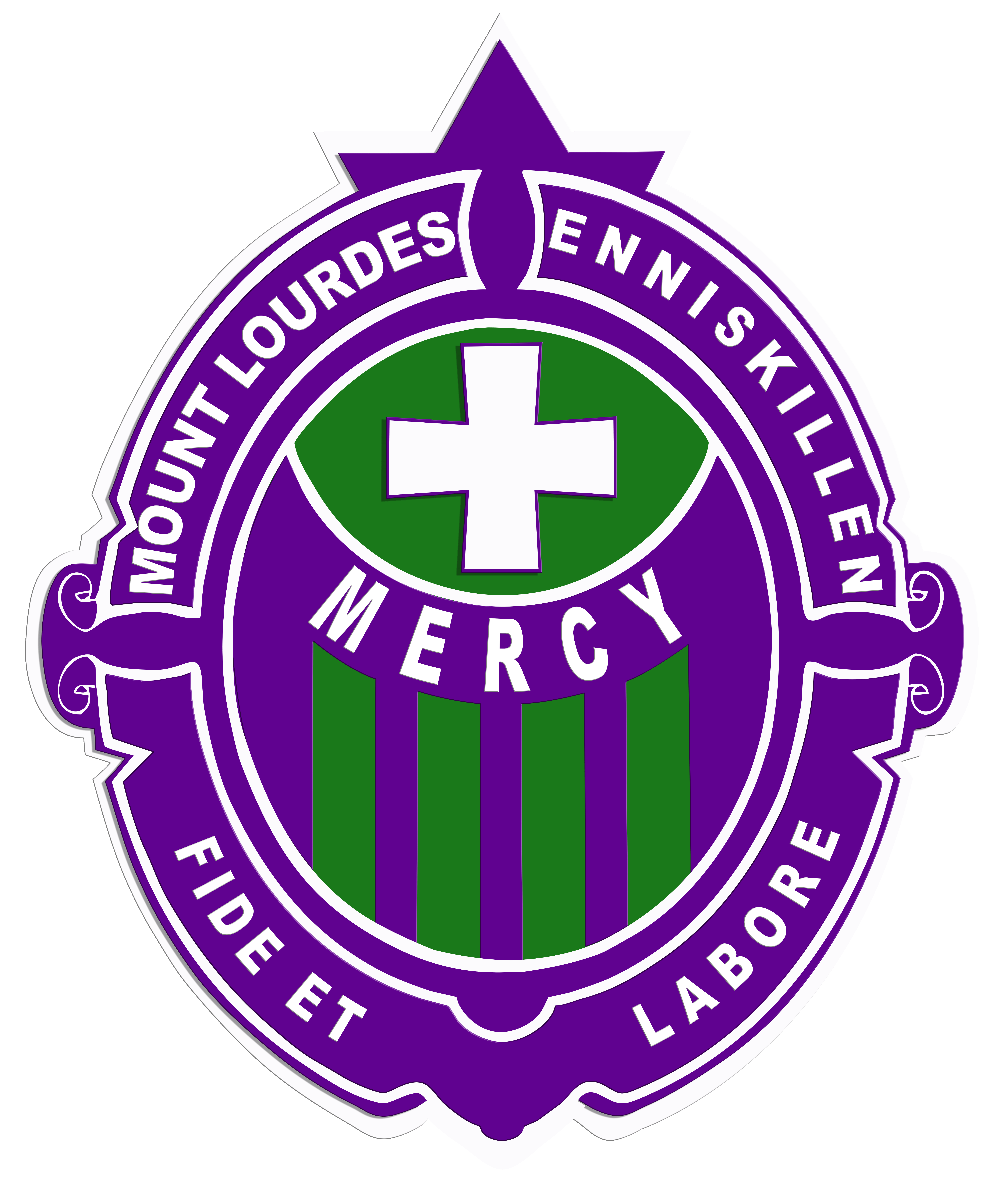Mathematics Department

SUBJECT OVERVIEW
CCEA GCSE Mathematics is a modular specification which offers opportunities to build on the mathematical skills and capabilities developed through the study of the Key Stage 3 curriculum.
There are two tiers of entry for GCSE Mathematics; Foundation and Higher. Within each tier there is a choice of modules, this enables all students to demonstrate achievement by working at the level most appropriate to their ability. The assessment model provides the opportunity for students to improve their results by re-sitting modules.
To complete GCSE Mathematics all candidates must take two written exams (there is no controlled assessment element).
Subject Content
Year 11 Higher Level content includes:
-
Manipulation of algebraic fractions
-
Quadratics – factorising & solving
-
Compound measures
-
Straight line graphs
-
Trigonometry
-
Arc lengths & sector areas
-
Surface area & volume of cones, spheres etc
-
Circle theorems
-
Cumulative frequency, quartiles & boxplots
-
Histograms & stratified sampling
Year 12 Higher Level content includes:
-
Irrational numbers & surds
-
Indices & standard form
-
Simultaneous equations (1 linear & 1 quadratic)
-
Cubic, reciprocal & exponential functions
-
Direct & indirect proportion
-
Transformations
-
Equation of a circle
-
3D Trigonometry
-
Sine & cosine rules
-
Conditional probability
METHOD OF ASSESSMENT
Year 11 (45% of GCSE Mathematics)
Module M2 (Foundation)
or
Module M3 (Higher)
or
Module M4 (Higher)
all calculator papers
Year 12 (55% of GCSE Mathematics)
Module M6 (Foundation)
or
Module M7 (Higher)
or
Module M8 (Higher)
each module comprises 2 papers:
1 calculator & 1 non-calculator
CAREER INFORMATION
A grade C in GCSE Mathematics is a requirement for entry onto the vast majority of Higher Education courses and for most careers.
University courses with significant mathematical content often require a higher grade in GCSE Mathematics. This includes but is not limited to:
Accountancy & Finance, Actuarial Science, Architecture, Computer Science, Economics and Social Science courses, Engineering, Medicine, Science & Applied Science courses, Software Development, Quantity Surveying, Teaching
Further Mathematics
SUBJECT OVERVIEW
The CCEA GCSE Further Mathematics specification extends the mathematical skills and capabilities developed through the study of the GCSE Mathematics towards A-Level Mathematics content.
Under the curriculum model in Mount Lourdes, one group of Year 10 students each year study towards completing both the GCSE Mathematics and GCSE Further Mathematics specifications. Students are placed into the Year 10 Further Maths class based on their performance in Maths throughout Year 9. These students complete their GCSE Mathematics examinations at the end of Year 11 and progress to study the GCSE Further Mathematics specification during Year 12.
Students who have studied GCSE Further Mathematics are particularly well-placed to progress to study AS and A2 Mathematics.
SUBJECT CONTENT
Pure Maths
-
Manipulation of algebraic fractions
-
Quadratics – factorising & solving
-
Simultaneous Equations (3 variables)
-
Trigonometric equations
-
Logarithms & Exponentials
-
Matrices
-
Differentiation
-
Integration
Mechanics
-
Kinematics
-
Vectors
-
Forces
-
Newton’s laws of motion
-
Moments
Statistics
-
Standard Deviation & Variance
-
Bivariate Analysis
-
Conditional Probability
-
Binomial Probability Distribution
-
Normal Distribution
METHOD OF ASSESSMENT
To complete GCSE Further Mathematics candidates must take three examination units as follows.
Unit 1: Pure Mathematics (50%)
Unit 2: Mechanics (25%)
Unit 3: Statistics (25%)
The CCEA A-Level Mathematics specification builds upon the CCEA GCSE Higher Mathematics qualification at Key Stage 4. It promotes progression through AS and A2 level and provides a suitable foundation for study of maths-related courses in further and higher education.
Subject Content
AS LEVEL
AS 1: Pure Mathematics
AS 2: Applied Mathematics
(Mechanics & Statistics)
A2 LEVEL
A2 1: Pure Mathematics
A2 2: Applied Mathematics
(Mechanics & Statistics)
METHOD OF ASSESSMENT
All modules are taken as written examinations (there is no controlled assessment element).
The final A-Level Mathematics qualification is comprised of 40% weighting from the AS modules and 60% from the A2 modules.
AS 1 Pure Mathematics
-
60% of AS / 24% of A-Level
-
1 hour 45 minutes examination
AS 2 Applied Mathematics (Mechanics & Statistics)
-
40% of AS / 16% of A-Level
-
1 hour 15 minutes examination
A2 1 Pure Mathematics
-
36% of A-Level
-
2 hours 30 minutes examination
A2 2 Applied Mathematics (Mechanics & Statistics)
-
24% of A-Level
-
1 hour 30 minutes examination
RECOMMENDED SUBJECT GRADE AT GCSE
Higher Level Maths A* / A
NB: Students must have studied GCSE Modules M4 & M8
CAREER INFORMATION
A-Level Mathematics is a qualification which is in high demand in the workplace.
Further / Higher Education courses or careers that either require A-Level Mathematics or are strongly related include: Medicine, Architecture, Engineering, Accountancy & Finance, Economics, Physics and Software Development.
OTHER INFORMATION
This is a challenging course with a strong emphasis on both the understanding and the application of advanced mathematical concepts.
A-Level Mathematics students will be required to study a diverse range of topics from the areas of Pure Mathematics, Mechanics and Statistics.
